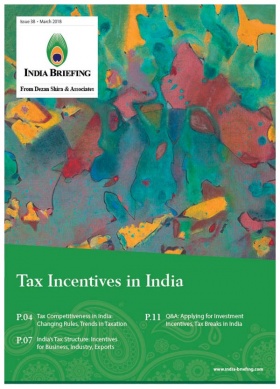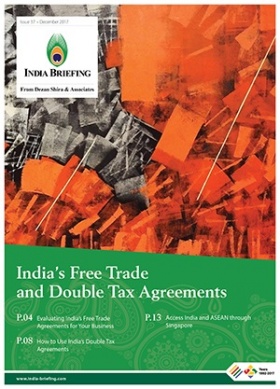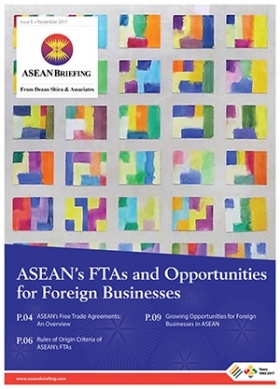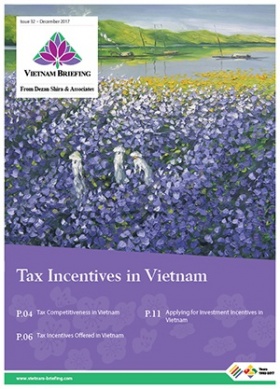India’s Act East Policy: New Trade, Manufacturing Opportunities
 The 2015-2016 Indian budget includes a proposal to set up manufacturing hubs in CLMV countries. The CLMV includes four Southeast Asian nations – Cambodia, Myanmar, Laos, and Vietnam, which are seeing the highest foreign direct investment growth in the region, especially in manufacturing.
The 2015-2016 Indian budget includes a proposal to set up manufacturing hubs in CLMV countries. The CLMV includes four Southeast Asian nations – Cambodia, Myanmar, Laos, and Vietnam, which are seeing the highest foreign direct investment growth in the region, especially in manufacturing.
As India seeks to deepen economic partnerships with Southeast Asia under an “Act East” policy declared by Prime Minister Modi, it has prioritized CLMV economies. The commerce ministry has sought US$16.1 million (Rs 100 crore) in budgetary allocations for a Project Development Fund to oversee investment in the CLMV manufacturing hubs.
There is a history of industrial cooperation between India and the CLMV countries. Major Indian investment in Vietnam includes large projects, such as oil exploration, power generation, and chemical manufacturing. In January 2015, there are a total of 84 projects funded by Indian investments in Vietnam. The EXIM bank of India has contributed a total of 20 Letters of Credit worth US$1 billion in CLMV countries towards power, irrigation, and manufacturing projects.
Trade between India and CLMV countries grew tenfold from US$1.1 billion in 2004 to US$11.2 billion in 2013. In terms of FDI, approved Indian foreign investment in CLMV countries stood at US$40.9 million in 2013. For the same year, total FDI from India to the ASEAN region as a whole stood at US$ 1.3 billion.
Why CLMV?
India and the CLMV countries share similar economic characteristics when it comes to prospects for manufacturing. All of these countries have a large young labor force and inexpensive operating costs. However, CLMV countries have become a major source of competition for India in manufacturing due to their position in integrated value chains in Southeast Asia. For instance, in 2013-14, the phone manufacturer Nokia moved its operations from India’s Chennai to Vietnam’s Bac Ninh province largely to take advantage of cheaper regional logistics.
Along with being a preferred region for manufacturing, CLMV countries are also large potential markets for Indian products. The region has a population of 165 million, growing incomes, and a rapidly expanding middle class. In Vietnam alone, the middle class is expected to increase from 2 million in 2014 to 33 million by 2020.
A survey by the Japanese External Trade Organization (JETRO) in December 2014 showed that base monthly salaries for manufacturing employees of Japanese-invested companies in CLMV countries were lower than those in India. While base monthly salaries in India were reported at US$239, those reported for CLMV countries were US$113 in Cambodia, US$112 in Laos, US$127 in Myanmar, and US$176 in Vietnam.
As India seeks to benefit from the emerging industrial power of the CLMV countries, it is also accelerating cooperation with cities within each country. In one such case, textiles, pharmaceuticals, tourism, and high-tech agriculture have been identified as sectors for Indian investment into Can Tho, Vietnam. India has also proposed bilateral trade agreements with each CLMV country. A major study by the EXIM bank in 2014 cited agriculture, infrastructure, and SME development as major potential areas of cooperation between India and the four countries.
Challenges remain
India’s goal of deepening economic relationship with the CLMV countries faces a number of challenges, which investors must be aware of. Foremost among these is connectivity. Despite sharing a border that is 1,643 km long, India’s immediate neighbor Myanmar isn’t connected to the country by rail and there is only one poorly maintained road that connects the two countries. There are ambitious infrastructure projects in the pipeline like the Kaladin Multimodal project and the India-Myanmar-Thailand trilateral highway. However, implementation and building has been fraught with uncertainty. Construction of the trilateral highway has experienced numerous delays and may miss its 2016 completion deadline.
Another challenge is the Indian government’s policy itself. The government hasn’t clarified which sectors investors can focus on in the proposed manufacturing hubs.
One more challenge is competition from other countries already investing in CLMV. While connectivity may hinder Indian investment, in December 2014, China pledged US$11.5 billion to develop 92 high priority investment and technical assistance projects in the Greater Mekong sub-region, which includes the CLMV countries, Thailand, and China’s Yunnan Province and Guangxi Zhan autonomous regions. 46 percent of these projects will be based in the CLMV countries.
Although trade between India and the CLMV countries has increased 10 times in the last decade, this pales in comparison to these countries’ economic relations with other partners, such as China and other ASEAN countries. Intra-ASEAN FDI in CLMV countries stood at US$ 3.5 billion in 2012-2013 and Chinese FDI in CLMV countries stood at US$ 2 billion. In the same period, more than 80 percent of Chinese FDI in the four countries went to manufacturing. Setting up manufacturing facilities in CLMV could help India tap into the highly integrated regional value chain networks within Southeast Asia and between Southeast Asia and China.
As India promotes a “Make in India” campaign, the decision to set up manufacturing infrastructure outside the country does not contradict the domestic manufacturing goal. Indian companies will benefit from utilizing the easier logistics, integrated supply chains, and cheaper labor costs in the CLMV region. Competition with foreign companies in the CLMV will also increase the competitiveness of Indian businesses and as a result the quality of Indian goods and services, which means that in the long-term, Indian companies will bring better production practices and improved technology back home. Provided that connectivity between India and CLMV countries improves, government support for investment ensures that companies will “Make in India” by utilizing regional supply chains.
About Us
India Briefing is published by Asia Briefing, a subsidiary of Dezan Shira & Associates. We produce material for foreign investors throughout Eurasia, including ASEAN, China, Indonesia, Russia, the Silk Road, & Vietnam. For editorial matters please contact us here and for a complimentary subscription to our products, please click here.
Dezan Shira & Associates provide business intelligence, due diligence, legal, tax and advisory services throughout India and the Asian region. We maintain offices in Delhi and Mumbai and throughout China, South-East Asia, India, and Russia. For assistance with India investment issues or into Asia overall, please contact us at india@dezshira.com or visit us at www.dezshira.com.
- Previous Article The Implications of India’s Minimum Alternate Tax (MAT) for Foreign Investors
- Next Article State by State: India and Minnesota Trade














